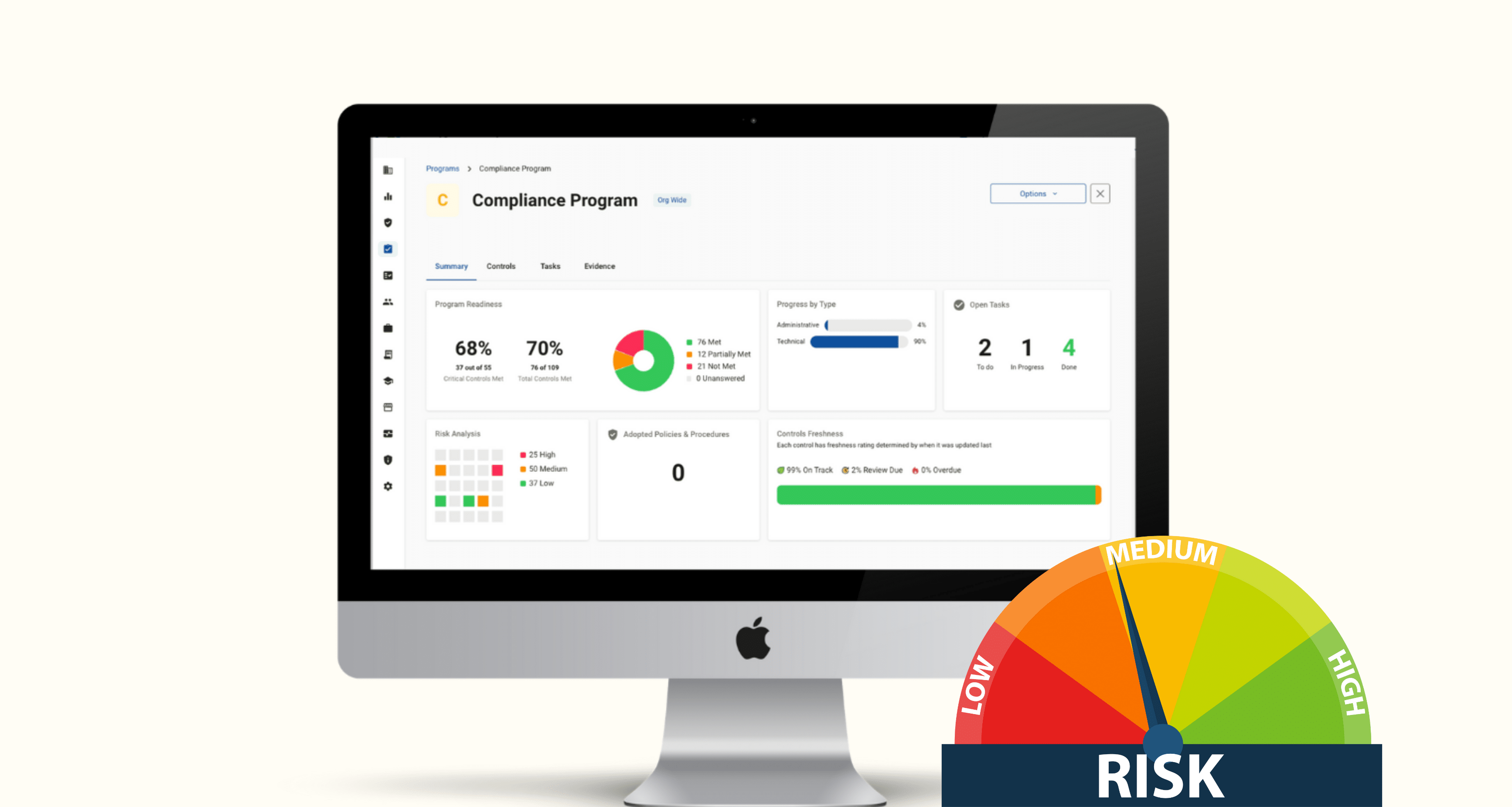
Understanding GRC Software
Governance, Risk, and Compliance (GRC) software is a comprehensive platform designed to integrate and manage governance, risk management, and compliance activities within an organization. It provides a unified framework that enables businesses to identify, assess, monitor, and mitigate risks while ensuring adherence to regulatory requirements and internal policies. GRC software consolidates various processes, data sources, and workflows into a centralized system, fostering transparency, accountability, and strategic decision-making across all levels of the organization.
Key Functionalities of GRC Software
Modern GRC software solutions offer a wide range of functionalities to support robust governance, risk management, and compliance practices:
- Risk Assessment and Management: Facilitates the identification, assessment, prioritization, and mitigation of risks across different business units and processes. Enables risk owners to track risk exposure, monitor controls, and implement remediation plans.
- Compliance Management: Streamlines compliance efforts by mapping regulatory requirements to internal controls and policies. Automates compliance assessments, audits, and reporting to demonstrate adherence to industry standards and regulatory mandates.
- Policy and Procedure Management: Centralizes the creation, dissemination, and enforcement of organizational policies, procedures, and guidelines. Tracks policy revisions, approvals, and acknowledgments to ensure alignment with regulatory changes and business objectives.
- Audit Management: Supports the planning, execution, and follow-up of internal audits and assessments. Automates audit scheduling, workflow management, findings tracking, and corrective action management to enhance audit efficiency and effectiveness.
- Incident and Issue Management: Provides a structured approach to capturing, investigating, and resolving incidents, non-conformities, and compliance breaches. Facilitates root cause analysis, corrective actions, and incident reporting to prevent recurrence and improve operational resilience.
- Reporting and Analytics: Generates comprehensive reports, dashboards, and metrics to monitor GRC performance, track key indicators, and facilitate data-driven decision-making. Offers real-time insights into risk exposure, compliance status, and governance effectiveness.
- Workflow Automation: Automates repetitive tasks, approvals, notifications, and escalations related to governance, risk, and compliance processes. Enhances operational efficiency and ensures consistent adherence to established procedures and controls.
Benefits of GRC Software
Implementing GRC software provides organizations with numerous benefits that contribute to operational efficiency, risk mitigation, and regulatory compliance:
- Enhanced Risk Oversight: Improves visibility into enterprise-wide risks and their potential impact on business objectives. Enables proactive risk management strategies and informed decision-making to minimize threats and capitalize on opportunities.
- Streamlined Compliance Efforts: Simplifies compliance management by aligning regulatory requirements with internal controls and policies. Reduces compliance-related costs, penalties, and reputational risks associated with non-compliance.
- Increased Accountability and Transparency: Establishes a culture of accountability by documenting and tracking governance activities, risk assessments, compliance activities, and audit findings. Promotes transparency in reporting and communication with stakeholders.
- Operational Efficiency: Reduces manual effort and administrative burden through automation of GRC processes, allowing resources to focus on strategic initiatives and value-added activities.
- Improved Decision-Making: Provides actionable insights and analytics that enable executives and decision-makers to prioritize resources, allocate investments, and address critical risks and compliance issues effectively.
- Scalability and Flexibility: Adapts to organizational growth and evolving regulatory landscapes by scaling GRC capabilities and integrating with other enterprise systems. Supports global operations and multi-jurisdictional compliance requirements.
Considerations for Selecting GRC Software
Choosing the right GRC software solution requires careful evaluation of several factors to align with organizational goals and operational requirements:
- Comprehensive Coverage: Assess whether the software covers all necessary GRC domains (governance, risk management, compliance) and offers flexibility to customize workflows and processes.
- Integration Capabilities: Ensure compatibility with existing IT infrastructure, including ERP systems, CRM platforms, and third-party applications. Facilitate seamless data integration and interoperability to avoid silos and enhance data integrity.
- User-Friendly Interface: Select a user-friendly interface that promotes adoption among stakeholders, including executives, risk managers, compliance officers, auditors, and employees across different departments.
- Security and Data Privacy: Prioritize GRC solutions that adhere to industry standards and regulations (e.g., GDPR, HIPAA) for data security, encryption, access controls, and incident response protocols.
- Vendor Reputation and Support: Evaluate the vendor's reputation, experience in the GRC software market, customer support services, and track record of successful implementations and ongoing support.
- Scalability and Customization: Choose a scalable solution that can grow with your organization's needs and offers customization options to accommodate unique business processes and regulatory requirements.
Implementing GRC Software
Successful implementation of GRC software involves a structured approach to maximize its benefits and ensure alignment with organizational objectives:
- Assessment and Planning: Conduct a thorough assessment of current GRC processes, identify gaps and areas for improvement, and define implementation goals and success criteria.
- Vendor Selection: Engage with potential vendors through demonstrations, proof-of-concept trials, and references. Evaluate solutions based on functionality, usability, integration capabilities, and vendor support.
- Data Migration and Configuration: Collaborate with IT and GRC teams to migrate existing data, configure the software to align with organizational workflows, and establish user roles and permissions.
- Training and Change Management: Provide comprehensive training sessions and resources to educate users on software features, best practices, and compliance requirements. Foster a culture of GRC awareness and accountability.
- Pilot Testing and Feedback: Conduct pilot testing phases to validate system functionality, gather user feedback, and address any issues or enhancements before full deployment.
- Deployment and Optimization: Roll out the GRC software gradually or in phases, monitor performance metrics, and continuously optimize workflows and configurations based on user feedback and evolving business needs.
Conclusion
GRC software plays a pivotal role in helping organizations navigate complex regulatory landscapes, manage risks, and uphold compliance standards while driving operational excellence and business resilience. By centralizing governance, risk management, and compliance activities into a unified platform, GRC software enables proactive risk mitigation, enhances transparency, and supports informed decision-making across all levels of the organization. Choosing the right GRC software involves evaluating functionality, integration capabilities, user-friendliness, security measures, and vendor support to ensure alignment with organizational objectives and regulatory requirements. With the right GRC solution in place and a strategic implementation approach, organizations can strengthen their governance frameworks, mitigate risks effectively, and achieve sustainable growth in today's competitive business environment.
